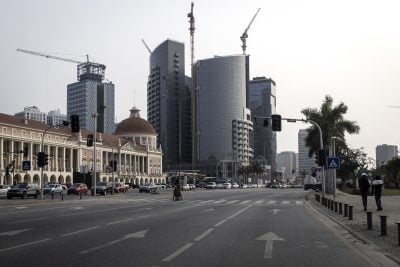Supply chain remains a massive challenge in Africa. Although urbanisation is taking hold, much of the urban growth in Africa is informal and uncontrolled, putting overwhelming strains on delivering products and services with underdeveloped infrastructures. Furthermore, supply chains undergo pressures that even the most seasoned supply chain professionals struggle with.
The route to market for products can involve any combination of rivers, mountains, deserts, jungles, floods, and drought, not to mention road and railway difficulties and governance issues that can stymie the transporting of goods across international boundaries. Although advances have been made in information and communications technologies – most Africans now have cellphones, for example – there remains a large gap in infrastructure quality compared with other regions.
Once a retailer enters an African country, putting the right products on the shelves also remains difficult. African consumers are, generally speaking, price sensitive yet brand conscious – indeed brand-loyal regardless of how much money they have. Consumers do little discretionary spending, so every penny they spend must be prudent and useful. In addition, choices are limited, so only few branded products exist in almost all countries in the region. Even in South Africa, where consumers have much higher spending power than the rest of the continent, brand loyalty is still very high.
Yes, Africa is a major opportunity, but capturing it will require some patience, hard work, and a little ingenuity.
The right approaches to Africa
Comparing market size and market saturation reveals three sets of markets in Africa (see figure 3). The following is a breakdown of the ARDI top 10 into the three main go-to-market approaches in Africa.
Start with the basics. The vast majority of Africa – including Ethiopia, Ghana, Mozambique, Rwanda, and Tanzania in our top 10 – has limited market saturation but also low maturity. Consumer spending is generally much lower than in the more mature markets.
While these markets are promising because of favourable demographics and recent growth trends, the opportunities available have, up to now, been limited primarily to offering basic consumer packaged products, preferably international brands at low prices. Supermarkets in these markets sell few fresh products; rather, fresh products are grown at home or acquired at local informal markets.
Move quickly. The countries in this group – Gabon and Nigeria – have rapidly evolving retail dynamics and demographics, with many companies already established or planning entry. There is no time to spare as these first movers gain an advantage as they establish their brands early and secure loyal customer bases.
Price and brand still matter in these countries, but bulk purchases are increasing, and store size, look and feel, and assortments are growing more important. A fair amount of fresh produce is sold in modern supermarkets. Modern retail still makes up only a small portion of these markets, but international retailers are moving in as annual per-capita retail sales surpass $1,000.
Differentiate. These markets (Botswana, Namibia, and South Africa in the top 10) have Africa’s most advanced retail sectors as well as an existing presence of international retailers. As in many modern markets, many buyers are willing to pay extra for fresh foods and convenience, and are increasingly seeking to make bulk purchases in big, fancy stores with large assortments.
Although major brands still dominate, many are willing to consider private labels. Retail sales per capita average about $2,500 per year. These markets offer opportunities for retailers that can offer differentiated products that are sometimes hard to find, appealing to a growing middle class and globally minded citizens. Retailers in these markets can start investing in higher-quality branded and private-label products.
The ARDI rankings
To arrive at an ARDI top 10, we measured 48 countries in sub-Saharan Africa using major macroeconomic and retail-specific variables for each country. The ARDI’s first top 10 ranking spreads across the continent, including three countries from the East, three from the West, and four from the South.
While all 10 countries are relatively stable, the variations are wide, especially in terms of market size and saturation. The diversity is immense in terms of demographics, economics, and retail trends.That’s why a small country such as Rwanda (with its highly fragmented yet increasingly attractive market) can rank first while South Africa rates lower because of its saturation and low time pressure. Meanwhile, prominent countries such as Kenya, Uganda, and Angola failed to crack the top 10.
In the following section we examine the ARDI top 10 by region. A regional look reveals similar characteristics and dynamics (such as fast-growing population growth and urbanisation rates) among different countries.
Of course, within these clusters are cities and regions with their own unique characteristics. Nevertheless, achieving scale for most retailers and consumer goods firms will require a regional approach.
Want to continue reading? Subscribe today.
You've read all your free articles for this month! Subscribe now to enjoy full access to our content.
Digital Monthly
£8.00 / month
Receive full unlimited access to our articles, opinions, podcasts and more.
Digital Yearly
£70.00 / year
Our best value offer - save £26 and gain access to all of our digital content for an entire year!

 Sign in with Google
Sign in with Google 




